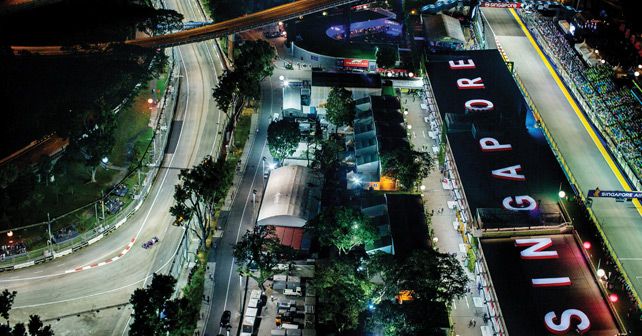Can you have too much of a good thing?
F1 will increase to 22 races in 2020 – although yet to be confirmed at the time of writing – the total number of events is sneaking ever upwards. It’s not so long ago that there were only 16 races each year.

In August, the Formula 1 world – if not the fans – enjoyed a break. It may be frustrating for the enthusiasts, but it’s of vital importance for those involved, because it gives them the opportunity to spend time with their families and kids – which helps to manage their work-life balance slightly better. It’s still not great, because going to 21 races a year means that one is not at home for 21 weekends out of 52 each year. This means that family life suffers, and it’s no secret that many F1 marriages end up in divorce. It works for some, with the wives merrily calling themselves ‘F1 widows’ and enjoying a different kind of life to the norm. Absence, so they say, makes the heart grow fonder, but it is tough for most relationships. There is a break in the winter but kids are at school for much of that time.
Big business, of course, doesn’t worry about this sort of thing. Money is money, and if people don’t want to work in Formula 1, they can always stay home and do something less interesting. But with the news that F1 will increase to 22 races in 2020 – although yet to be confirmed at the time of writing – the total number of events is sneaking ever upwards. It’s not so long ago that there were only 16 races each year, and everyone seemed happy with that, but the desire to increase revenues (and the demand) have meant that the calendar has expanded little-by-little – another race here, another race there.
What people often overlook is that the locations became much more diverse as well, with the newer races tending to be outside Europe, which means that, in addition to the extra trips, there’s extra travel (and more days away from home) with each new race. F1 life got a little harder as a result. Having said that, there were decisions made to ease the burden on some of those involved – with the night time curfews being introduced during race weekends, to stop the mechanics working night-after-night, as they used to do in the past. They occasionally have to do all-nighters if there’s been a crash, for example, but generally-speaking they have an easier life in the pits.

It’s the support staff who work the hardest, notably the hospitality people, who arrive at dawn and often stay until well after dark, depending on their tasks that day. They are the silent heroes and heroines of the modern era. Oddly enough, the media works harder than ever before, as the Internet demands constant feeding and the hours are longer than ever before. Don’t get me wrong, I’m not complaining. If you choose to be involved in Formula 1, you do it because you’re passionate about it. You know it’s not a normal job and no-one goes into it expecting to work nine-to-five, but the teams report more-and-more that it is getting harder to fill the roles. This is perhaps due to the lifestyle, but it might also be because teams are now so much bigger…
When all is said and done, it is yet to be made clear that adding races is what the public wants. Having too many events is just as bad as having too few, something which NASCAR is suffering from in the United States, where tumbling spectator numbers have meant that there are now plans to cut back from the 38-race, 10-month season, in order to better suit the demands of the modern era. The plan is to host more double-headers, with more races on a particular race weekend – but fewer weekends on the whole. This is a model that some in Formula 1 think might be a good idea, with multiple races on a race weekend, as happens in other formulae – notably in Formula 2 and Formula 3. But will having racing on Saturdays AND Sundays really create more viewers? In the modern age, there are so many more choices for leisure time that it’s not necessarily wise to think that fans will be willing to spend twice as much time watching the sport, rather than doing other things instead. There is also the question of how consumers consume, because things are changing – with TV not necessarily the only way in which people watch races. There are now many different ways to allow fans to spectate, and the rise of what one might call ‘highlights spectators,’ who watch only the incidents, packaged for them to reduce the time commitment to just a few minutes. Old-fashioned spectators may sneer at the concept, but when it comes to the business of sport, one consumer has the same value as another, and how they enjoy the sport is not the issue. One must cater for all tastes and all means of delivery.
The Formula 1 Group today does a lot of research into spectators – trying to learn more about its customers, or perhaps, more importantly, its potential customers. It asks questions that fans (and others) were never asked before. The goal of this research is to tailor the sport to its fans. Clearly, there is an appetite for more Grands Prix when it comes to the number of race promoters out there. There is definitely more demand than availability… and that has to be a good thing.
Joe Saward has been covering. Formula 1 full-time for 30 years. He has not missed a race since 1988.
Also read - The curious case of the F1 calendar







.webp)

.webp)




















Write your Comment on